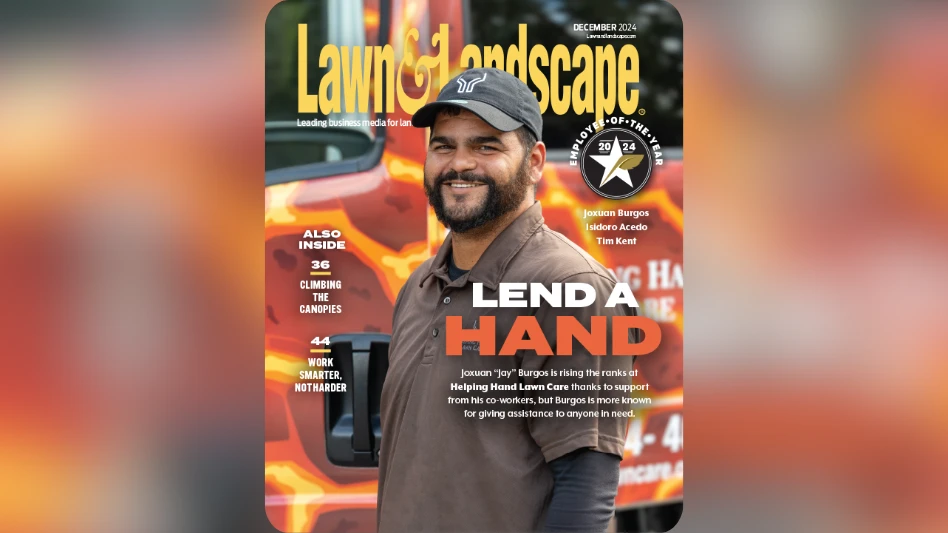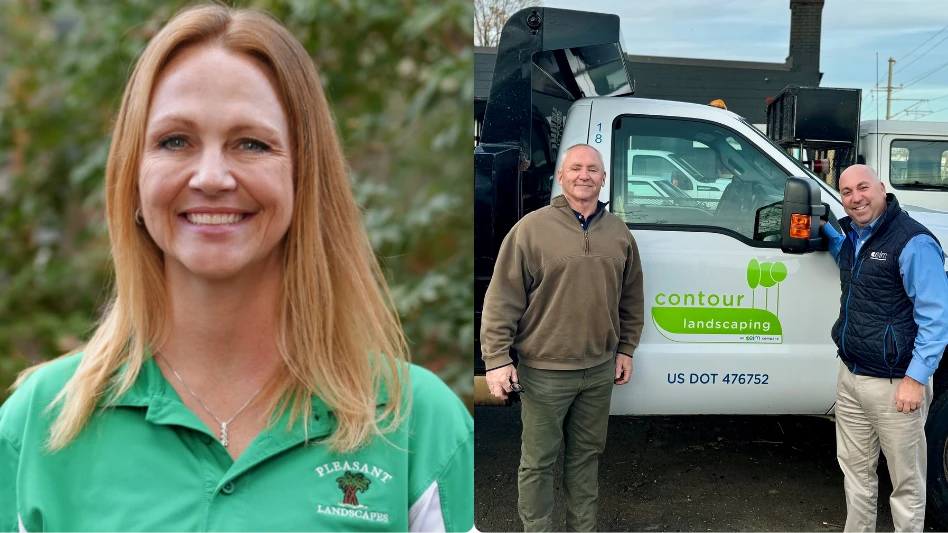 Photo: Granger landscapesThere’s no better feeling than paying half-price for a high-quality piece of equipment. That’s what Brandon Granger did when he purchased his Toro Dingo for $18,000 at a CAT Rental store. The machine had 200 hours on it and was in great condition. It came with a collection of attachments – auger, Harley box rake, bucket, pallet forks. Granger invested in a new engine for the 3-year-old machine; it was rattling at 1,200 hours. But now he’s set.
Photo: Granger landscapesThere’s no better feeling than paying half-price for a high-quality piece of equipment. That’s what Brandon Granger did when he purchased his Toro Dingo for $18,000 at a CAT Rental store. The machine had 200 hours on it and was in great condition. It came with a collection of attachments – auger, Harley box rake, bucket, pallet forks. Granger invested in a new engine for the 3-year-old machine; it was rattling at 1,200 hours. But now he’s set.
“That was by far my favorite purchase – it’s so useful,” Granger says, noting a rental can cost $250 per day. “Rent it for three days and you can make a payment on it and it’s yours all month.”
Granger is crunching numbers carefully – not something he enjoys. While business was up in late summer, he has been a cautious buyer this year, choosing to maintain and “squeak out” as many hours from equipment as possible.
It hasn’t been that easy. In July, he spent $1,100 on maintenance and parts – above average. “I’m more hesitant now mainly because last year, I bought two trucks and two new mowers,” he says. This year, Granger is investing in handheld equipment, which the company can keep running for about 12 to 18 months.
“You can spend $50 on a maintenance bill to fix them, or buy brand new for $200,” he notes.
Granger doesn’t ever throw away handheld equipment. “We have a nice mount of them at the shop because we use them for parts, or we’ll leave them with the mechanics at the dealership so they can use the broken equipment for parts,” he says.
But sometimes, retiring equipment is not an option, such as in August when three walk-behind mowers sputtered out in the same week. “I had to hold back from buying a new mower because that’s $6,000,” Granger says. “So we just made due and got the machines back up and running.”
Operations were behind that week, but Granger keeps a spare zero-turn mower and one walk-behind. His crews carry extra handheld equipment on their trailers as a sort of equipment failure insurance policy. Each trailer is stocked with two edgers, two line trimmers, and three or four backpack blowers. “Equipment can break at any time,” Granger points out.
Each month, he evaluates the fleet and determines which equipment is “causing trouble.” He keeps track of warranty periods, and when a major part (engine, cutting deck) is no longer covered, he scrutinizes the wear-and-tear situation and either sells the mower on eBay or trades it in at the dealership. Mowers usually last two or three years at Granger Landscapes.
But if Granger takes on a big, new account, he’ll consider adding to the fleet. “We evaluate the account and figure out the cost of new equipment and the cost to maintain it,” Granger explains.
Historically, Granger buys a new mower every six months to keep the fleet fresh. But he expects to continue his conservative purchasing strategy through 2010.
The author is a freelance writer based in Bay Village, Ohio.
Jump To:
Introduction
Small Business: Less than $500,000
Large Business: More than $2 million

Explore the October 2009 Issue
Check out more from this issue and find your next story to read.
Latest from Lawn & Landscape
- LawnPro Partners acquires Ohio's Meehan’s Lawn Service
- Landscape Workshop acquires 2 companies in Florida
- How to use ChatGPT to enhance daily operations
- NCNLA names Oskey as executive vice president
- Wise and willing
- Case provides Metallica's James Hetfield his specially designed CTL
- Lend a hand
- What you missed this week





